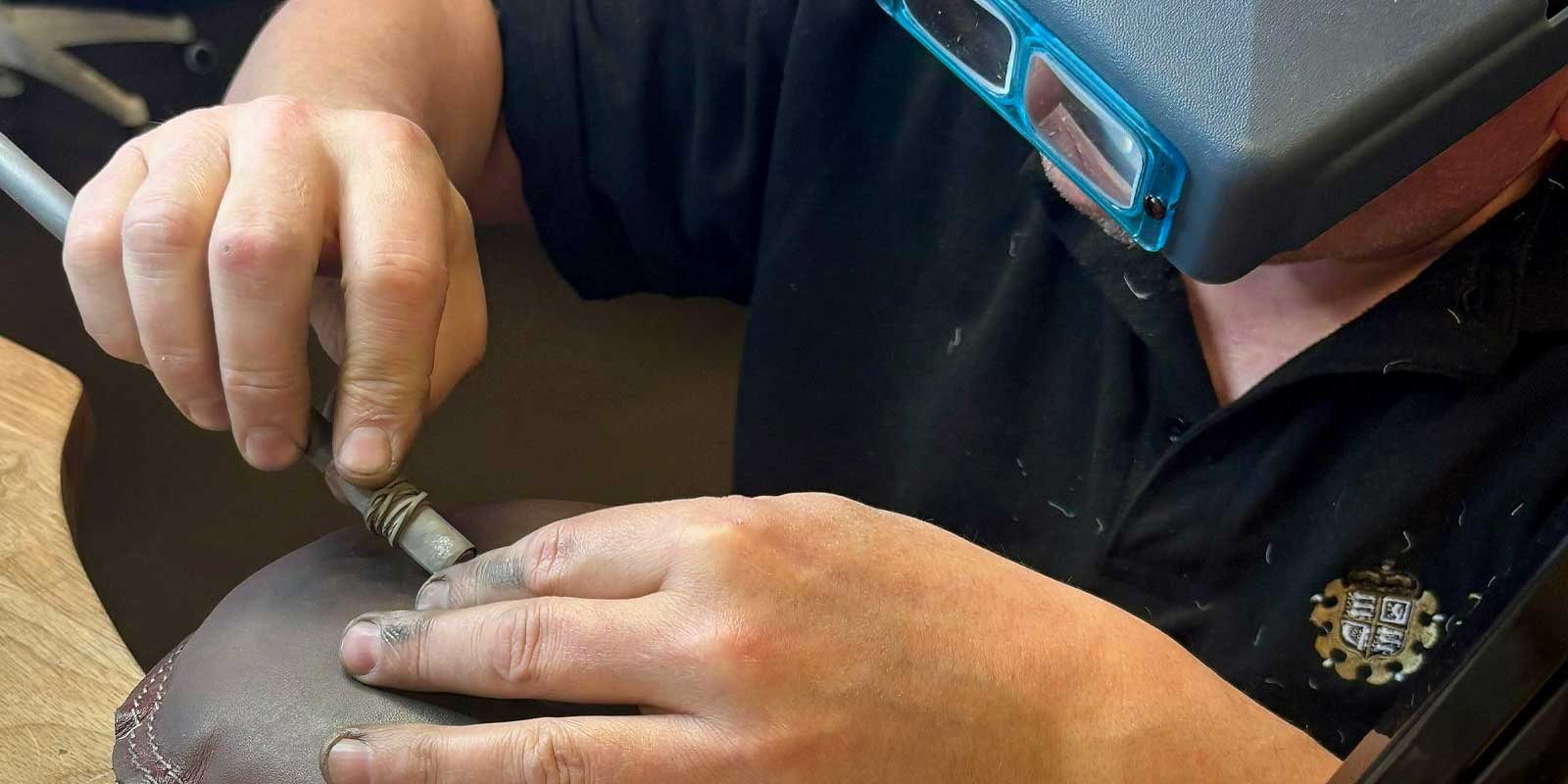Silversmithing allied trades to be added to the UK’s Red List of Endangered Crafts

A stark warning has been issued for the future of traditional craft skills in the UK, as new research by Heritage Crafts has identified silversmithing allied trades amongst 20 new crafts at risk of vanishing from the UK, in the latest major update of its pioneering project – the Red List of Endangered Crafts – published today.
The research, which has been funded by The Pilgrim Trust and The Royal Mint, has found that difficulties in recruiting skilled workers, material costs and fluctuation in demand are placing unsustainable strain on skilled trades in historic centres like Birmingham and Sheffield – meaning that without urgent action many of these heritage craft skills could disappear within a generation.
Silver allied trades (which incorporates precious metalworking skills such as lost wax casting, drop stamping, plating, wire drawing, buffing and polishing) is a new entry to the ‘endangered’ category of the Red List.
While silversmithing itself remains a high-profile craft in the UK, many well-known brands and designers are dependent on allied trades to provide the specialist skills that support the manufacture of silver objects. These trades have always been carried out by highly-specialist craftspeople, each representing generations of accumulated knowledge.
Many allied trades work ‘behind the scenes’, and this lack of visibility can mean that skills gaps are not evident until it is too late. Businesses that previously relied on a local network of independent sub-contractors now have to bring more of the skills in-house, at much higher cost.
As the local ecosystems of allied trades comes under increasing pressure, there is a danger that a tipping point could soon be reached, and the hidden infrastructure that underpins the craft of silversmithing could be lost completely.
Other new entries to the Red List include cut crystal glass making, pewter working, glove making and rattan furniture making, increasing the number of crafts listed from 146 to 165.
This work is a part of an ongoing partnership between Heritage Crafts and The Royal Mint that has seen 13 training bursaries awarded to early-career practitioners and precious metal craftspeople since 2023 – to silversmiths Iona Hall, Annie Higgins, Rebecca Oldfield and Emma-Jane Rule, silver spinners William Appleby, Caius Bearder, Claire Mooney and Lily Smith, jewellery makers Richard Barber, Rosie Elwood, Andreia Gomes and Tilly Whitehouse, and armour maker Horatio Hawes.
The partnership has also seen the presentation of the Precious Metalworker of the Year Award to watch dial enameller Sally Morrison from Glasgow in 2023, and silver spinner Warren Martin from Sheffield in 2024 – the latter presented at a special reception at Eltham Palace, featuring a trophy specially made by The Royal Mint team. The Precious Metalworker of the Year 2025 will be announced in November.
The Royal Mint’s mission is not only to create beautifully crafted products for its customers, but to safeguard the skills and craftsmanship that underpin the precious metals industry. As part of its commitment to sustainability, it is pioneering new techniques including reclaiming gold from electronic waste and silver from hospital X-rays. By blending traditional coin making skills and modern innovation, these initiatives help to preserve and promote precious metals craftsmanship for the future.
Mary Lewis, who led the research on behalf of Heritage Crafts, said:
“As in previous editions, the Red List presents a deeply mixed picture of the state of traditional crafts today. While some continue to thrive, many are under growing threat from the pressures of an unforgiving economic climate. Rising operational costs, a lack of structured training and mounting market pressures are placing unsustainable strain on the allied trades that support silversmithing and other crafts that depend on expert hand skills.”
Anne Jessopp, CEO of The Royal Mint, said:
“With a heritage rooted in precious metals, The Royal Mint is proud to champion traditional British craftsmanship skills, playing a small but meaningful role in preserving and protecting the UK's craft heritage.
“Our craftspeople carry expertise handed down through generations, keeping traditional silversmithing and allied trades alive. There's something truly special about reskilling team members from across the business, using their expertise in coin production in the creation of exquisite pieces of jewellery.
“By raising awareness of these endangered crafts and providing bursary opportunities, we hope to preserve these precious skills for future generations.”
The Red List of Endangered Crafts 2025 edition is available to view online at http://redlist.heritagecrafts.org.uk. There is also an accompanying print publication sponsored by The Royal Mint.
